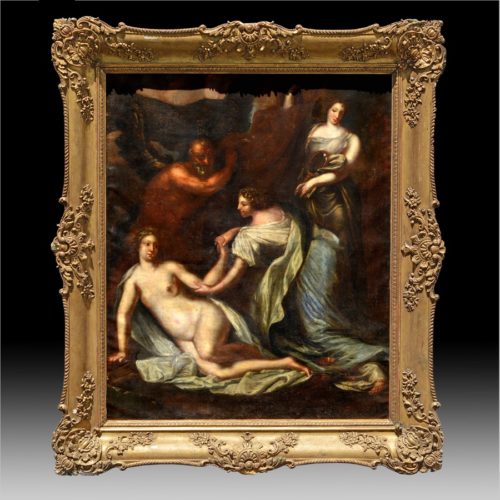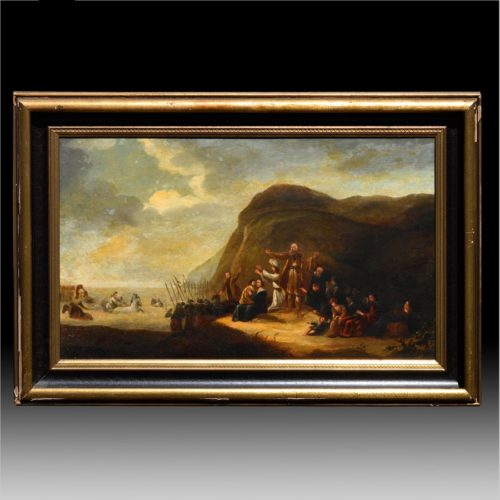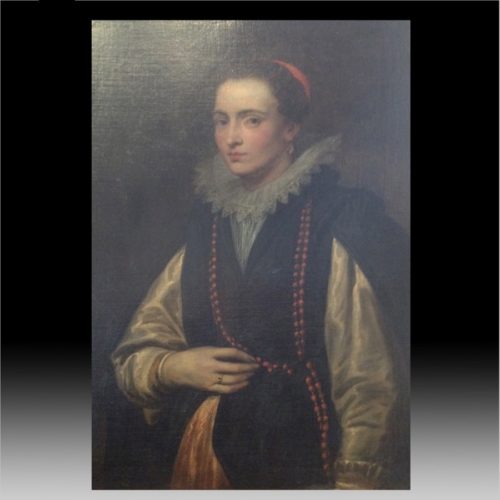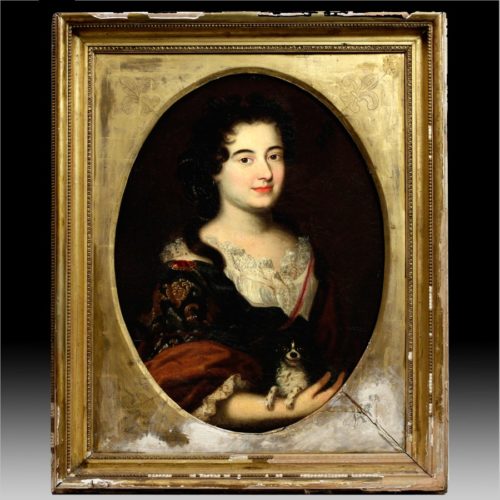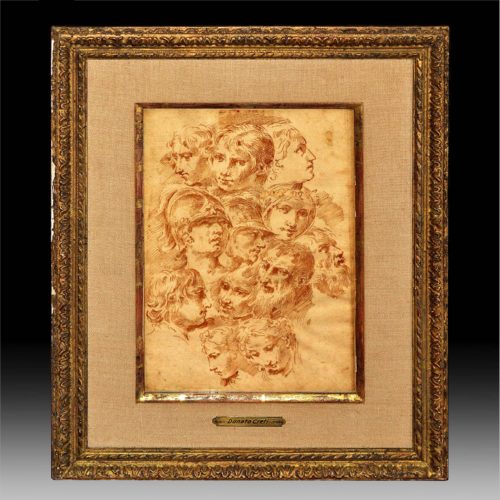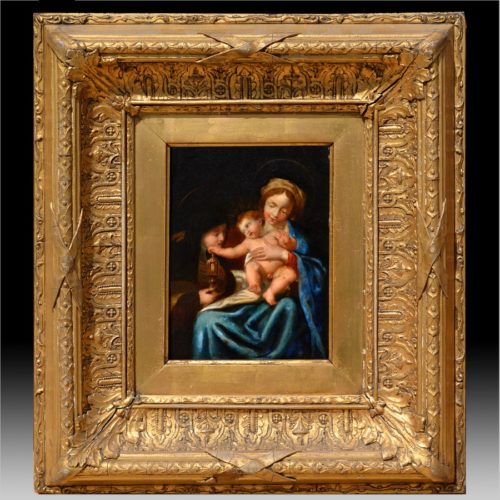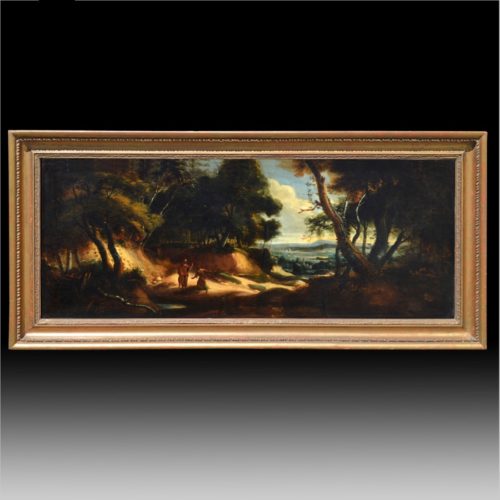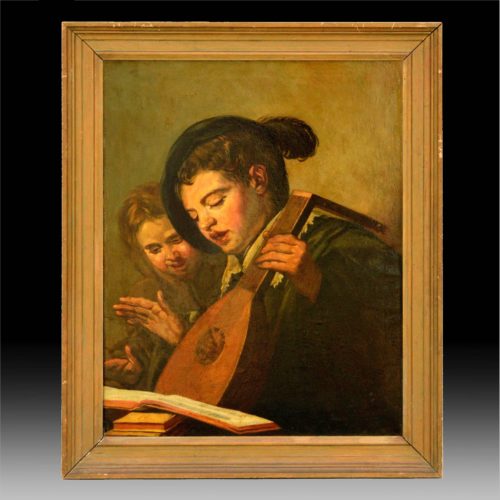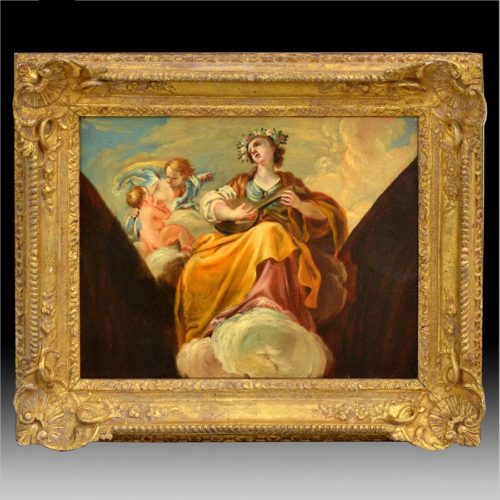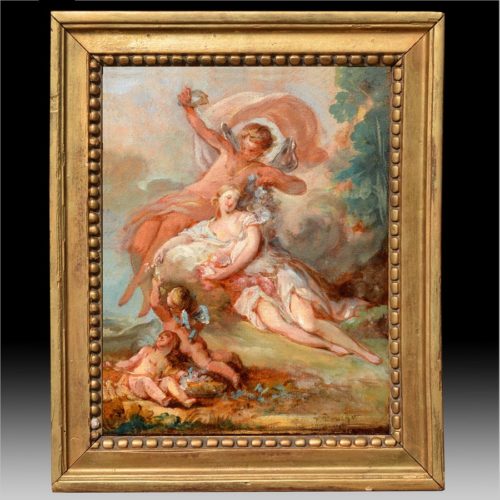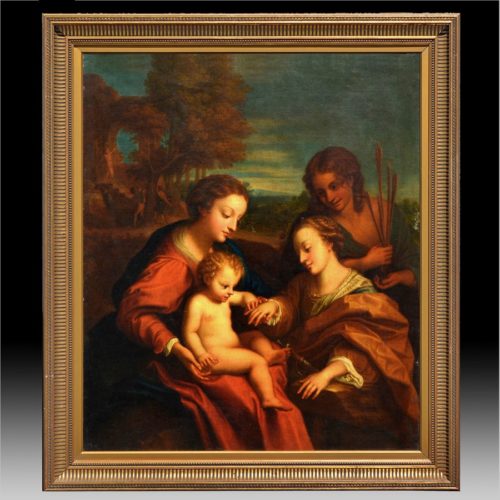-
Carlo (Vavaliere) Maratta (Italian, 1625-1713) “Time Revealing Truth and Justice” Oil on canvas 53 x 43 ½ inches (134.6 x 110.5 cm) CL102794-128 3108801-2 NB-1040 #49
-
Willem de Poorter (Dutch, b. 1608) “Pharaoh’s Army Drowning in the Red Sea” Oil on panel 20 x 32 ½ inches (50.7 x 82.5 cm) CL102794-108 123802-2 @NB-1040 #16
-
Sir Anthony van Dyck ‘Portrait of the Marchesa Lomellini-Durazzo, three quarter length, in a black Coat and white Sleeves’ oil on canvas 33 5/8 x 24 in. 85.4 x 61 cm. CL102794-266 5115602-2 @AC-sAlbert.
-
Henri Gascars ‘Portrait of a Lady, half length in a blue Dress with a white Chemise and a brown Wrap, holding a Spaniel' Bears inscription on a label on the reverse ‘Mrs. Cunliffe' oil on canvas, in a painted oval 27 x 19 ½ in. 68.6 x 49.5 cm. Henri Gascar (1635 – 1 Jan 1701) (also Gascard, Gascars) was a French-born portrait painter who achieved artistic success in England during the reign of Charles II. He painted many leading ladies at court, including several of the King's mistresses, before returning to Paris. He subsequently relocated to Rome, where he died in 1701. Gascar came to England about 1674, probably at the behest of Louise de Keroualle, Duchess of Portsmouth, Charles II's favourite mistress. Gascar (or Gascard, as he seems to have spelt his name at first) was already known as a skillful portrait-painter; among the portraits already painted by him was that of Nicolas de Lafond, author of the "Gazette of Holland", painted in 1667, and engraved by Peter Lombart. The patronage of the Duchess of Portsmouth ensured Gascar a rapid success in England. His flamboyant style, contrasting with the stolid English approach, seemed to suit the frivolity of the time and he painted many of the ladies of Charles II's court. His lack of attention to detail in the likeness he made up for by the sumptuous draperies and tawdry adornments around the subject. For a short time he became fashionable, and is said to have amassed a fortune of over £10,000.
-
Donato Creti “Studies of Heads” Pen and brown ink on paper 10 ¾ x 7 ¼ inches @NB-1040 #26 Donato Creti (24 February 1671 – 31 January 1749) was an Italian painter of the Rococo period, active mostly in Bologna. Born in Cremona, he moved to Bologna, where he was a pupil of Lorenzo Pasinelli. He is described by Wittkower as the "Bolognese Marco Benefial", in that his style was less decorative and edged into a more formal neoclassical style. It is an academicized grand style, that crystallizes into a manneristic neoclassicism, with crisp and frigid modeling of the figures. Among his followers were Aureliano Milani, Francesco Monti, and Ercole Graziani the Younger. Two other pupils were Domenico Maria Fratta and Giuseppe Peroni.
-
Lodewyck de Vadder ‘The Temptation in the Wilderness’ oil on canvas 17 ¾ x 44 in. (45 x 111.8 cm) CL102794-177 351003-2 @AC-NB
-
F. Hohle (early 20th Century) after Frans Hals. ‘Two singing Boys’ signed lower right F. Hohle cop and with the monogram lower left FG, oil on canvas 66.5 x 53 cm The original, on canvas, 66x52 cm, is in the Staatliche Kunstammlung Kassel. It was acquired by Landgraf Wilhelm VIII of Hessen in 1749 (see S.Slive, Frans Hals, 1974, II.fig. 44 and III.pp.15/16, no.23) CA102894-46 734506-3 @Albertson
-
Francisco Bayeu Y Subias (1734-1795) “An Allegorical Figure of Music, a Study for a Pedentive” Oil on paper laid down on canvas 13 ¼ x 16 ½ inches Francisco Bayeu y Subias (9 March 1734 – 4 August 1795) was a Spanish painter, active in a Neoclassic style, whose main subjects were religious and historical themes. Born in Zaragoza, Aragon, he received a broad childhood education. He then moved to Madrid, winning a scholarship with the painting of the ‘’Tyranny of Gerion’’ to study in the Academia Real de Bellas Artes de San Fernando. The death of his parents and the care of his brothers forced him to return to Zaragoza, until he was recalled by Anton Raphael Mengs to help decorate the Royal Palace of Madrid. He served as court painter to King Charles III of Spain. He was named a professor of the Royal Academy of Fine Arts of San Fernando in 1765 and director in 1788. He painted in the Charterhouse of Aula Dei in Zaragoza. In 1767 he was named court painter for Charles III, king of Spain. He was involved in the decoration of various Royal palaces near Madrid. He helped provide designs for tapestries. He also painted for the College of San Ildefonso, the Royal Monastery of the Incarnation (Madrid), the Basilica of our Lady del Pilar in Zaragoza, and the cloister of the Cathedral of Toledo.
-
JaquesNatoire with indistinct signature, ‘F Boucher’ “Zephyr Flora” Laid down on canvas 10 ½ x 8 inches (26.7 x 20.3 cm) CL102794-137 451003-2 @NB-1040 #62

